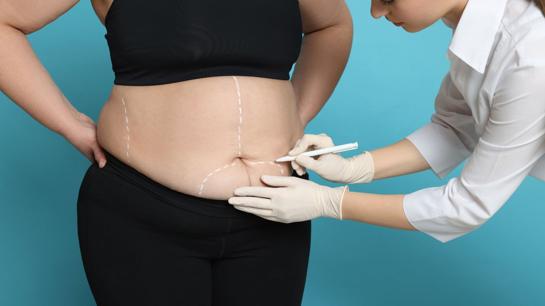Gastric Plication Abroad Guide
Exploring gastric plication abroad? Discover how this minimally invasive bariatric surgery offers affordable weight loss, faster recovery, and safe care in overseas clinics. A real-world guide to surgery abroad and medical tourism.
Why So Many Are Quietly Asking: “Is Gastric Plication Abroad My Next Shot?”
You might not bring it up at brunch, but you wouldn’t believe how many people google “gastric plication abroad” in the dead of night. For some, it’s after another diet fizzles out, or another insurance rejection letter lands in the mail. For others, it hits after a routine doctor’s visit ends with “well, keep trying,” and you realize nothing is changing. Maybe you’ve tried more weight loss tips than you care to admit—and nothing’s stuck. Maybe you’re just… tired.
Suddenly you read about people flying overseas for a different kind of bariatric surgery—one that promises strong weight loss without cutting or removing your stomach, and no rerouting of intestines. It sounds almost too good to be true. But it’s out there: gastric plication, sometimes called “sleeve plication” or “gastric imbrication.”
Let’s break down why more people are looking outside their borders for solutions, what really happens in a plication procedure, who the best candidates are, and what to expect if you take the leap.
Gastric Plication in Plain Language: What It Is, and Why It’s Turning Heads
Let’s skip the jargon. Gastric plication is a minimally invasive weight loss surgery that reduces your stomach volume by inwardly folding the stomach wall and stitching it in place. The result? A stomach that’s smaller on the inside, but without a single staple or cut to remove tissue.
- No permanent removal of stomach or intestines.
- No bands, balloons, or foreign devices.
- Lower risk of leaks versus stapled procedures (in experienced hands).
- Recovery is often swift—you’re up walking within hours, home or at your hotel in 2–3 days.
It may surprise you to know: plication isn’t for everyone, and results vary. But for many, it offers a “middle ground”—less radical than a sleeve or bypass, but often more lasting than injections or pills.
Why Do People Consider Bariatric Surgery Abroad—And Why Now?
Here’s the thing… For many Americans, Brits, and Canadians, it comes down to three big factors:
- Cost: At home, plication (if you can find it offered) can cost $10,000–$18,000. Abroad? The whole package often comes in closer to $4,000–$7,000—including hospital, surgeon, anesthesiologist, follow-up, and sometimes even hotel and airport transfers.
- Access & Wait Times: Local clinics may not offer plication at all—or may have waiting lists stretching for months, even years. Overseas? You could have a virtual consult next week and surgery within a month.
- Control & Dignity: Let’s be real: some people want privacy, less judgment, and the feeling of being seen as a person—not a “case.”
Many clinics that focus on bariatric surgery abroad have honed the process to feel less like a production line and more like a guided experience.
The Big Picture: Is Gastric Plication Abroad Right for You?
This isn’t a fly-and-fix “miracle.” The best outcomes are for:
- Adults with BMI over 30–35 who’ve struggled with obesity for many years.
- People who understand surgery is a catalyst, not a cure-all—meaning you’ll be asked to change your eating habits for life.
- Those who want to avoid more invasive, permanent procedures (or have medical reasons to avoid removal or bypass surgeries).
It might not be right if:
- You have severe GERD (reflux is sometimes worsened, not fixed, by plication).
- You’ve had multiple prior stomach surgeries.
- You want a procedure guaranteed to match the weight loss of a full sleeve or bypass.
- You’re looking for instant change without lifestyle tweaks.
What to Expect: The Gastric Plication Abroad Experience, Step by Step
Let’s break this down—no gloss, no fairy tales.
- Virtual consult: You’ll meet with a coordinator, sometimes the surgeon, review your medical history, answer awkward questions, and get a transparent cost. Good clinics ask for everything—labs, meds, previous diets, even sleep habits.
- Travel prep: Flight, hotel booking, maybe some diet or medication adjustments. A decent clinic will email a packing list (think: loose clothes, favorite pillow, charger, prep for protein shakes).
- Arrival & Pre-Op: You meet the team in person. They redo labs, sometimes imaging, maybe even a COVID test (old habits die hard). The surgeon reviews your plan, marks the abdomen, asks if you’ve got questions—don’t hold back!
- Surgery day:
- Minimally invasive (all through tiny incisions)
- Usually takes 60–90 minutes
- General anesthesia, but modern protocols mean you’re up and walking later the same day
- Hospital/hotel recovery: Fluids only at first; some light pain, occasional bloating (they pumped your abdomen with CO₂, after all). Nurses help you walk laps, answer questions, monitor for rare complications.
- Discharge and Aftercare: Home or hotel, with a detailed eating/drinking schedule. Most clinics offer WhatsApp/video support for a month or more. Written instructions are your bible.
That part caught me off guard: How “quick” everything felt—one day you’re home, next you’re flying, and by week’s end you’re recovering with support in a new country. Scary? Sure, but it’s also surprisingly empowering.
What Makes Plication Different Among Bariatric Options?
- No resection: Nothing gets removed permanently—your stomach is folded, not sliced.
- Lower odds of vitamin and mineral shortage: Since the intestine isn’t diverted.
- Less invasive: Fewer leaks, infection, and surgical “red flags” than classic bypass in experienced hands.
- Yes, reversible: Though rarely needed, so it appeals to people nervous about “no-go-back” options.
- Weight loss is meaningful: But not “instant makeover” level. Think: 50–65% of excess weight over 1–2 years, not “Biggest Loser” territory.
How Does Gastric Plication Abroad Compare?
| Factor | Home (US/UK/Canada) | Gastric Plication Abroad |
|---|---|---|
| Total cost (all-in) | $10,000–$18,000+ | $3,500–$6,500 |
| Wait time | Months–years | 2–6 weeks |
| Pre-op process | Multi-step, fragmented | Streamlined, mostly virtual |
| Technology/standards | High, but variable | High in major clinics |
| Aftercare | Requires own follow-up | Remote + written instructions |
| Language | Native | English or native + translated |
| Full reversal? | Rarely needed | Possible with plication |
Always clarify—what’s included? Labs, anesthesia, nights, aftercare? If details are vague, move on!
Pros, Cons, and Contrasts: What Sets Plication Apart
Pros:
- Restrictive only (no gut re-routing, fewer absorption changes)
- No foreign objects/bands, reversible in many cases
- Lower surgical risk vs classic bypass, but more lasting than balloons or basic bands
- Short stay and fast recovery (back to moderate activity in days)
- Effective weight loss for motivated patients
Cons:
- Less data on ultra-long-term (10+ years) results
- Weight loss, while strong, generally slightly less than full sleeve or bypass
- Not the best fix for severe metabolic disease (e.g., uncontrolled diabetes)
- Some risk of gastric leaks, suture complications, or late “unfolding” (rare)
- Requires sustained dietary control—easy to “out-eat” restriction with soft, high-calorie foods
Typical Side Effects:
- Early fullness, mild nausea or cramps, temporary pain at incision areas
- Initial difficulty with certain foods (breads, meats), learning curve on portions
- Less risk of severe vitamin/mineral deficiencies
Who’s on the Team, and What Should You Expect from Staff?
You’ll want:
- Lead surgeon with dozens (ideally hundreds) of laparoscopic plications on record
- Anesthesiologist always involved, not just “on call”
- Nursing staff experienced in post-bariatric care (not just generic surgery ward)
- Sometimes: on-site nutritionists, English-speaking coordinators, and a local aftercare partner
Don’t hesitate to ask: “How many of these have you done this YEAR? What complications? Who takes my call if I feel unwell at the hotel or three weeks later?”
Real-World Risks (And What Good Clinics Admit)
Even the safest bariatric surgery abroad comes with cards face-up:
- Bleeding/infection/leaks: low, but not zero (1–3%)
- “Over-tightening” (too aggressive folding, rare, but needs fast fix)
- Late “unfolding”—stomach relaxing over months/years, potentially requiring further procedure
- Minimal but real anesthesia risks if you have heart, lung, or clotting issues
- Little data on ultra-long-term, but strong 2–3 year outcomes in published studies
Best teams will say “we’ll turn you away if we spot hidden risks,” not “everyone is a candidate.”
Recovery: The Actual Day-to-Day Reality
Day 1: Fluids only. Tiny sips, some gas, and a fierce urge to nap.
Day 2–3: Walking, more fluids, nurses gently nagging about movement, breathing, and emails from the coordinator.
First week: Broth, teas, protein shakes; first post-op “shower day” feels like a holiday. Some days you’ll be tired, some hungry, some anxious about leaks, but every day gets a smidge better.
Week 2+: Soft foods, gentle exercise. Real-world chores feel possible again.
By week 4: Most return to work, are driving, and building new routines.
First three months: Incredible changes on the scale—and also in energy, sleep, confidence. Plus, a new education in listening to your own body’s signals.
What About Long-Term Results?
| Metric | Gastric Plication Abroad (average) |
|---|---|
| Avg. excess weight lost (2 yrs) | 50–65% |
| Major complication rate | <2% |
| Avg. hospital stay | 2–3 days |
| Return to “normal life” | 10–21 days |
| Probability of needing revision | 10–15% (long term) |
| Patient satisfaction | 75–90% (with realistic expectation) |
Smart Questions Before You Commit
- How many plications have you done, and truly, in the past year?
- What’s included—100%?
- What protocol if complication occurs after discharge?
- Will you communicate with my home doctor if needed?
- What are the rates of leak, reversal, infection over the last 24 months?
- Is all post-op information translated and written, not just “verbal instructions”?
Is It For Me? And When Should I Wait?
Likely a Good Fit:
- BMI 30–45, motivated for lifestyle change
- No history of severe reflux or prior major stomach surgery
- Cleared by a home doctor and open to remote/virtual follow-up
Maybe Not Now:
- Untreated severe GERD, advanced diabetes uncontrolled, previous failed stomach plication/bypass
- Unable/unwilling to follow post-op instructions or coordinate aftercare at home
- Looking for “magic” or “guaranteed” extreme weight loss regardless of habits
Ethical teams abroad will guide you to pause or choose another route if the fit isn’t right.
Final Thought: Making an Informed Leap
No surgery is a miracle—and no article can tell you exactly what’s right for your life. But gastric plication abroad is opening doors for those worn out by local barriers (money, access, bureaucracy) and hungry for a fresh shot at real change.
Ask tough questions, demand written answers, and weigh your options with both skepticism and hope. Talk honestly with your doctors—home and abroad. The best clinics will welcome, not dodge, your doubts.
If your heart—and your practical sense—both say you’re ready, you just might find the next chapter of your health begins thousands of miles from home.






















